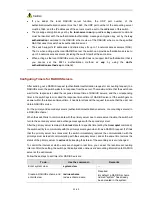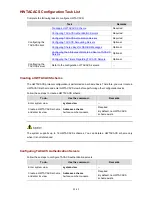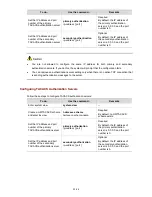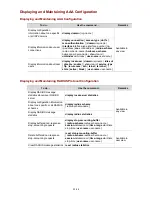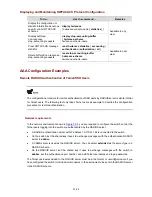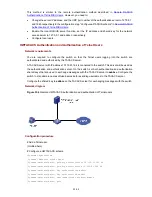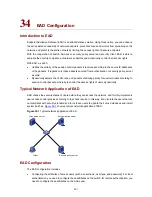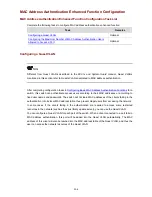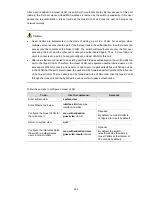
33-29
Displaying and Maintaining HWTACACS Protocol Configuration
To do…
Use the command…
Remarks
Display the configuration or
statistic information about one
specific or all HWTACACS
schemes
display hwtacacs
[
hwtacacs-scheme-name
[
statistics
] ]
Available in any
view
Display buffered
non-response
stop-accounting requests
display stop-accounting-buffer
{
hwtacacs-scheme
hwtacacs-scheme-name
reset hwtacacs statistics
{
accounting
|
authentication
|
authorization
|
all
}
Clear HWTACACS message
statistics
Available in user
view
reset stop-accounting-buffer
hwtacacs-scheme
hwtacacs-scheme-name
Delete buffered non-response
stop-accounting requests
AAA Configuration Examples
Remote RADIUS Authentication of Telnet/SSH Users
The configuration procedure for remote authentication of SSH users by RADIUS server is similar to that
for Telnet users. The following text only takes Telnet users as example to describe the configuration
procedure for remote authentication.
Network requirements
In the network environment shown in
Figure 33-2
, you are required to configure the switch so that the
Telnet users logging into the switch are authenticated by the RADIUS server.
z
A RADIUS authentication server with IP address 10.110.91.164 is connected to the switch.
z
On the switch, set the shared key it uses to exchange messages with the authentication RADIUS
server to
aabbcc
.
z
A CAMS server is used as the RADIUS server. You can select
extended
as the server-type in a
RADIUS scheme.
z
On the RADIUS server, set the shared key it uses to exchange messages with the switch to
aabbcc
, set the authentication port number, and add Telnet usernames and login passwords.
The Telnet usernames added to the RADIUS server must be in the format of
userid
@
isp-name
if you
have configured the switch to include domain names in the usernames to be sent to the RADIUS server
in the RADIUS scheme.






